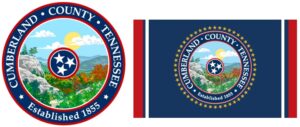CROSSVILLE AND CUMBERLAND COUNTY – THE EARLY DAYS
6/25/24
CNF
Imagine it’s the early 1800’s and the very spot you are reading this from has not been developed into anything yet. The local store at the crossing of the Kentucky Stock and the Burke Roads, one of the early stores, if not the earliest was established by a man named Samuel Lambeth. The main items the store stocked were salt, pepper, indigo, madder, stone dye, powder, lead, flints, cards to card wool and cotton, factory (as domestic-unbleached muslin was called then), big spotted calico, ginghams, tin cups and plates, pewter dishes, some 600 thread, bar iron and plow molds. (J.W. Dorton in the the Chronicle 1905) The place was called “Lambeth’s Crossroads”.
Lambeth’s store was operated by Thomas Majors when James Scott came over from Sparta which according to an old affidavit was “several years before 1853” and bought it. James Scott re-named it Scotts Tavern and farmed the land around it. When Cumberland County was formed in 1856, it was Scott’s offer to deed forty acres of Crossville land to the County which made the commissioners vote to locate the county seat there. In Deed Book A & B, p. 33 the document begins “I, James Scott…for and in consideration of one dollar….”
The land on which Crossville was built is much like other land in Cumberland County in that there were overlaps on it. The “Town Plat” of forty acres conveyed by James A. Scott was part of his tract of 640 acres. Half of this property he had purchased from James L. Narramore (deed recorded Bledsoe County, M-179) and half from Toliver Reavis (Deed recorded Cumberland County B-198).
The two families that occupy the area that would become Crossville were The John Wyatts and the J. L. Narramores and thought to be amongst the earliest settlers as they had come around 1800. Other early settlers are guessed to have been the Gibsons, Liles, Duncans, Majors, Millers, and Dibrells. This is reasoned by the fact that men of these names were early postmasters. Some of these settlers had come as late as 1850.
The post office was was established in 1836 under simply the name Crossville, with William Gibson as the first postmaster. The name of the post office was changed in 1843 to Rail Road Plains and then back again to Crossville in 1844. The earliest record, dated 1830, is of an entry of 640 acres made by Andrew Viney and Nelson M. Narramore. Jerry Gibson was said to have put up a building in 1850 which later would be known as the Central Hotel.
Jerry Gibson operated the Central Hotel in very early times and There is also a record of a man by the name of Bud England to have operated a store in 1865. In 1868 Scott sold his Tavern to J.J. Dunbar, who was one of the first Northerners to come to Crossville after the war. A wagon train from Albert Lea, Minnesota brought the Dunbars, Bert and Charlie Andrews, Oscar Perkins and the Pendletons that same year. Others who came about that time were Samuel Cline, the Forbeses, Reynoldses, Powels, Proctors, and Brookharts.
Several of these families organized the first church (1868) , the Swedenborgian.
According to a man named Edward Holt there were by this time three saloons and a one-room broken down school in Crossville.
In 1873 J. B. Killebrew in Resources of Tennessee described Crossville as a “village of 75 people, two stores, a good hotel, a post office and a wagon shop. It had a one-room log court house and a jail (rarely used).”
In 1878, the first doctor – Dr. Thomas Snodgrass-came from Sparta.
There is no written record of a school (except that in 1873) until the Webster Academy, financed in part by State Funds and in part by the Masons which was set up in a new frame building in 1885 and was the current Legion Hall as of 1956. In 1888 the first real school was started in the new Congregational Church.
The first town Census is guessed to be taken in 1880 and was made by Columbus Keyes. It reflected 99 people and he went all over town trying to find one more person to make it an even 100 but was not able to do so.
In 1887 Crossville was described in the Times as follows: (September 1, 1887): “Crossville is an old but not handsome place; lying right at the crossing of the Old Stock Road and the Old Stage Road, it’s foundation antedates the war. About 1856 Mr. A. Sloan erected the first building of size and importance. At the time of the war, but few buildings had been erected and that event paralyzed all progress for years. Even then the growth was slow and scarcely deserved the name. About a year ago it took a fresh impetus from the flattering railroad prospects and the increased demand for products of the Plateau, and building has gone on to some extent and from all appearances will continue.”
“Among the improvements at present going on are the handsome residence of Mr. G. C. Stevens on the hill at the entrance to the town, which when finished, will be an ornament to it. Mr. O. N. Wilcox is building on the North side and his residence will be complete and commodious. Mr. Way will build on the hill shortly as also Mr. Beadle of Iowa. Other residences are in prospect plans are not definitely drawn as yet.”
The article goes on to describe the view of the Crab Orchard Mountains and Walden’s Ridge and open flat woodlands north of the town with natural meadows.
It further reads “Crossville has always been a good trading point and for years has supported the General stores. A Gentleman fully competent to judge told us that these stores handle $20,000.00 worth of goods yearly. Three hotels have been established and are well-conducted, furnishing entertainment for man and beast. Walker and Bandy’s blacksmith and horseshoe shop finds abundance of employment and the harness shop lately established seems to fill a long-felt want. Mr. Andrews has a fine saw, shingle, planning and grist mill intown which furnishes increased facilities in building. O. C. Griswold’s Boot and Shoe Shop completes the tale of trades.”
“C. C. Way and Company, Real Estate Men, have their office in the new court house. These gentlemen do a large business and and advertise the country extensively. They are building a new and elegant office on Main Street which they will occupy shortly. Their teams are always at the disposal of parties desiring to look up land.”
“Webster Academy is a large frame schoolhouse situated just east of the town. It is used for the towns schoolhouse, also a meeting house. The upper story is used by a Masonic Lodge.”
“The new court house is a building of which the county is justly proud. Large and commodious, amply accommodating the wants of the county, it was built at the remarkably small cost of $5,000.00. It is of sandstone, handsomely finished inside and complete in detail. Strangers asked it’s probable cost put it at from $10,000.00 to $15,000.00.
“Town real estate is held at good prices and while we have had no ‘corner lot boom,’ there is a perceptible upward tendency. It is a real and unfictitious value an can be followed by no collapse. We have no saloon (It is not made clear what happened to the aforementioned saloons from the earlier years) nor can one be established within 4 miles of the Academy. Our people are kind and hospitable, always extending a welcome to strangers and new settlers”.
There were questions going around as to why the new seal and, for the first time, an official flag of Cumberland County has an establishing date one year earlier than what most are accustomed to locally. 
For the most part, Cumberland Countians have understood the county to be formed in 1856 as previously mentioned. The seal and flag shows 1855. Why the difference? They are two separate occasions. The Tennessee General Assembly passed the resolution establishing Cumberland County in November 1855. However, the first elections to establish the first Sheriff, County clerks, County court etc. were conducted in March of 1856.
A big celebration was held in Crossville in 1956 celebrating the County’s 100 year mark. It’s not clear why they chose to celebrate in 1956 – but that helped set the stage for future references of 1856 being the founding of Cumberland County.
While the Legislature passed the resolution establishing the county in 1855, the first County officers and local government, were not established until 1856. Legally the county was formed in 1855, but it did not begin functionally as a county until 1856. Below is the section in the resolution indicating the two dates.
Cumberland County Formation Act
ACTS OF TENNESSEE 1855-56, CHAPTER 6:
“An Act to establish the county of Cumberland in this state.”
SECTION 9. BE IT ENACTED, That the first County Court for said county, shall be held on the first Monday in April next, 1856, and shall perform all the duties of other county courts; and the first Circuit Court shall be held on the first Monday in May thereafter, and shall have all the jurisdiction of other circuit courts.
SECTION 10. BE IT ENACTED, That Thomas Frazier, of Bledsoe County, David Snodgrass, of White County, and Isaac Van Winkle, of Morgan County, Daniel Clark, of White, and John Johnson, of Putnam, are hereby appointed commissioners to locate the seat of justice in said county of Cumberland. They shall, so soon as the County Court shall notify them, proceed to locate the seat of justice for said county; purchase the land and convey the same to the commissioners, as directed in this act. Should any of them fail to attend, the County Court shall appoint others to fill their place. This act shall take effect, provided the same does not violate the Constitution in reducing the counties from which they are taken; and the County Court of said county shall cause the same to be surveyed and plat thereof to be filed in the Clerk’s office of said court.
SECTION 11. BE IT ENACTED, That there shall be an election held at the several districts and precincts in said county of Cumberland, on the first Saturday in March, 1856; at which election, the qualified voters of said county shall vote to elect a sheriff, clerks of the Circuit and County Courts, a register and trustee, who shall, when elected, be qualified at the first term of their respective courts. And the County Court shall elect the county officers which they are entitled to elect, at their first session, and all elections thereafter for county officers shall take place at the times fixed by law for the elections of such officers in other counties in this state. And it shall be the duty of the sheriff of Morgan County, to give the notice required by law, and by his deputies, to hold the elections provided for in this section, and to make the same returns and certificates for said county of Cumberland, which are by law required to be made in other counties.
SECTION 12. BE IT ENACTED, That a County Academy is hereby established in said county, known by the name of Webster Academy, and shall be located in or near the county town of said county, which said Academy shall be entitled to all the rights and emoluments as other county academies are entitled to; and the clerks of said courts, and justices of the peace, shall be entitled to such books as other clerks and justices are entitled to in this state.
Passed on November 16, 1855
We would love to hear any input you the readers have on the early history of Crossville. Much of the information was reconstructed in the early years with much guesswork and after two major fires in Crossville. Crossville’s main street burned in a disastrous fire in 1896, and in 1905 on February 15 the second courthouse was so consumed by fire that only the vault in the Register’s office and the stone wall structure survived. The County records kept in the offices that did not survive left a hole in the heart of the community and a massive effort was made to piece together the early history of the county. The insurance amount afforded was $6,000.00 of which the company A swift effort ensued to construct yet another courthouse. It became apparent that though the old sandstone walls still stood, more space was required for the new structure and the new one was constructed in the half square on the opposite side of main Street. A new building cost of “not more than 23,000.00” was authorized for the new building by the County Court. Within just a few months, a larger and more ambitious than the second Courthouse was constructed out of Indiana Limestone rather than the previous sandstone. The Cornerstone was laid on July 28, 1905 with the Masons in charge.
The record keeping from this point on became more accurate but for the writings of reporters for the Times, The Chronicle and books such as Cumberland County’s First Hundred Years written by Helen Bullard and published in 1986 which was relied heavily upon for this story, and the few records that survived the growth through the early years and the fires there is much lost forever regarding the early years of Crossville and Cumberland County.






